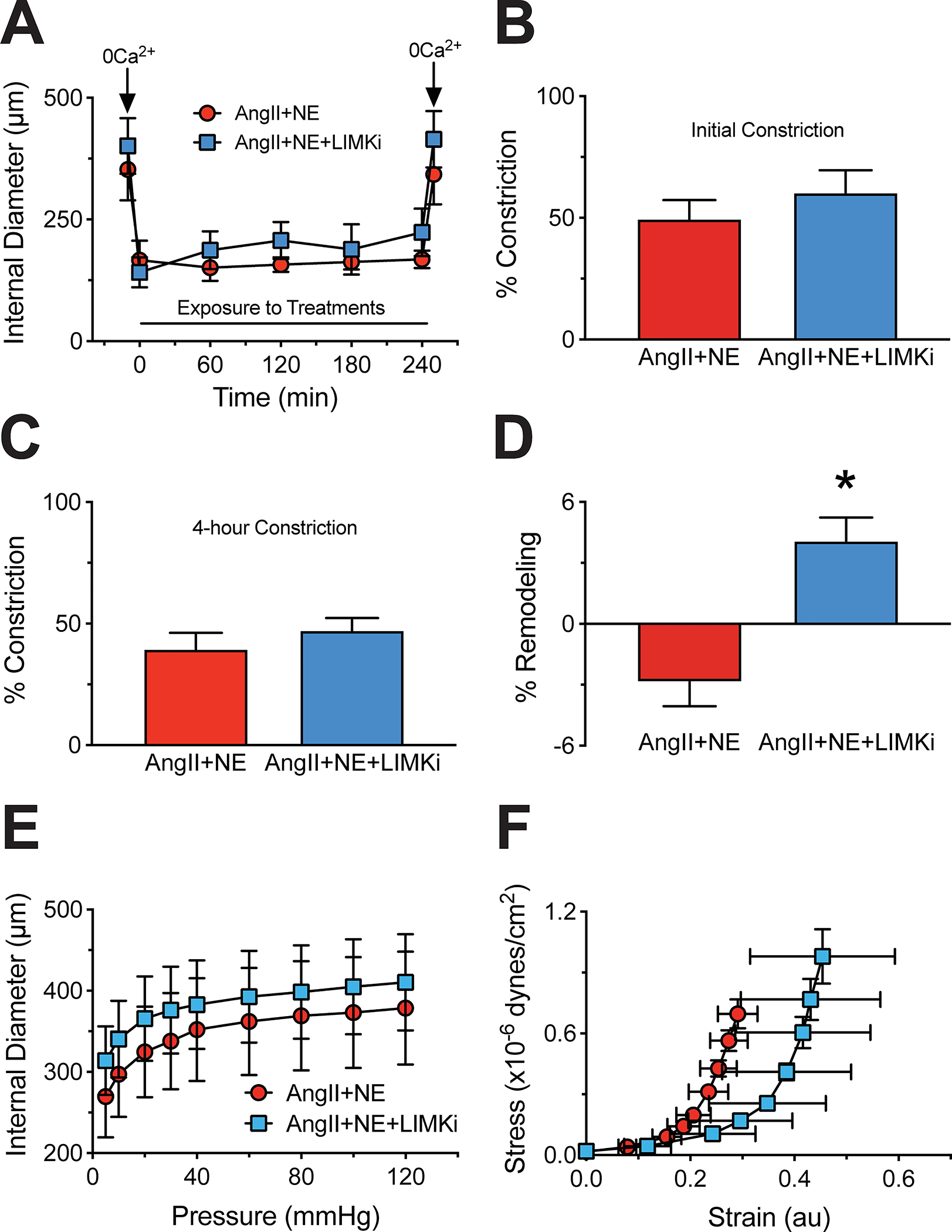Figure 2.

LIM kinase (LIMK) inhibition does not influence human omental small artery vasoconstriction, but prevents inward remodeling following a 4-hour exposure to angiotensin-II (AngII) and norepinephrine (NE). Small arteries were isolated from omental samples of subjects undergoing elective abdominal surgery and subsequently exposed to AngII (100nM) + NE (3μM) in the absence or presence of LIMK inhibition (LIMKi, 1μM) for 4 hours, while cannulated in pressure myography systems. A, Internal diameter during the initial exposure of the arteries to calcium-free conditions; then, while in the presence of the vasoconstrictor agonists without and with LIMKi, and after a second exposure to calcium-free conditions. B, Percent level of constriction upon the initial exposure (5 minutes) to AngII+NE. C, Percent level of constriction after 4 hours of exposure to the vasoconstrictor agonists. D, Change between post- and pre-constriction maximal passive (calcium-free) diameters expressed as percent remodeling following the 4-hour exposure to AngII+NE without and with LIMKi. E, Passive pressure-internal diameter curves following the 4-hour exposure to AngII+NE without and with LIMKi. F, Passive strain-stress curves following the 4-hour exposure to AngII+NE without and with LIMKi. Data are expressed as means ± SEM. *P<0.05 vs. AngII+NE without LIMKi, n=4/group.
